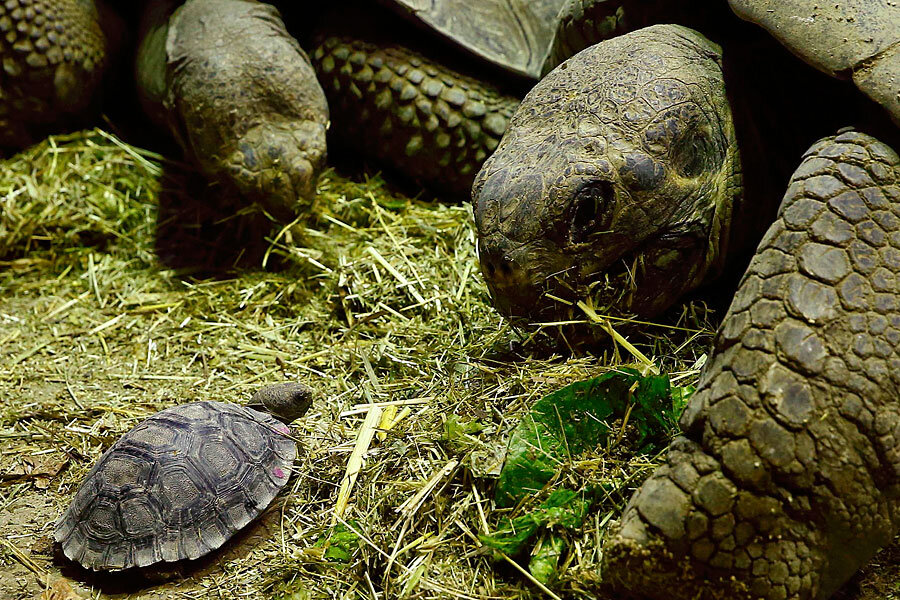Origins of slow food movement? Human ancestors noshed on tortoise
Loading...
In the latest archeological discovery at the Qesem cave site in Israel, researchers have found that ancient humans ate tortoises as well as large game.
Although the cave is mundanely named after a nearby highway junction, Qesem means "magic "in Hebrew. Since its discovery in the fall of 2000 during road construction, the cave has been a treasure box for archeologists who study ancient humans.
The cave was occupied, though not continuously, by ancient humans between 400,000 and 200,000 years ago. Humans filled up the cave, little by little. Eventually, a portion of the cave collapsed and the cave was hidden until its discovery 15 years ago.
Tortoise remains were found at all levels of the cave, indicating that ancient people chose to eat them throughout the cave’s history.
“Many people thought and still think that hunter gatherers were interested only in large game,” says Ran Barkai, one of the lead archeologists for the study, “and that ancient humans were not capable of exploiting small game.”
This discovery provides proof that ancient humans were also interested in smaller game like tortoises, although the majority of the bones found in the Qesem cave site indicate that hunter gatherers did pursue larger game like fallow deer.
Broken bones in the cave indicate that the occupants were also good at using all parts of the animals they captured. The hunter-gatherers brought selected body parts to the cave, where they not only ate cooked animal flesh, but they also sucked marrow from the shattered bones. “There is not a single complete bone in the cave,” says Dr. Barkai in a phone interview.
The Qesem cave dwellers treated tortoises no differently. Evidence from the cave suggests that there were three ways to eat the tortoises, including breaking the shell open by hammering them along a line at the base of the shell, using flint to pry the shell open, and roasting them in the fire.
Although analysis of 13 human teeth found in the cave indicates that ancient hunter gatherer diets included vegetables, evidenced by the presence of starch in the hardened dental plaque found on the teeth, and they definitely consumed a lot of meat.
The tortoises, according to Barkai, were “not significant for calories, but were probably much appreciated” in a diet of fallow deer meat.
Archeologist Dr. Avi Gopher, another of the new paper’s authors, says that tortoise hunting may have had a social meaning. To pursue fallow deer, hunters needed to be young and swift. Tortoises could be pursued by individuals unfit to hunt deer, such as the elderly and the young, in an early form of the division of labor.
This discovery could be significant in the ongoing debate about foraging practices. The Optimal Foraging Theory (OFT) predicts that foragers make foraging decisions based on cost-benefit analysis. In other words, hunter gatherers would choose to pursue food sources that would bring the biggest return for the smallest amount of effort.
Tortoises, while easier to catch than a deer, yield such a small amount of meat that it raises questions about the Optimal Foraging Theory. Dr. Gopher speculates that the pursuit of small game like birds and tortoises could indicate that food decisions were not just an economic calculation, but that there were other factors involved. Diversity of diet, for example, could have prompted ancient people to pursue low-yield game like tortoises.
The Qesem site is not the first evidence that ancient humans ate tortoises, but it is the "total package," with evidence of tortoise preparation and cooking techniques.







